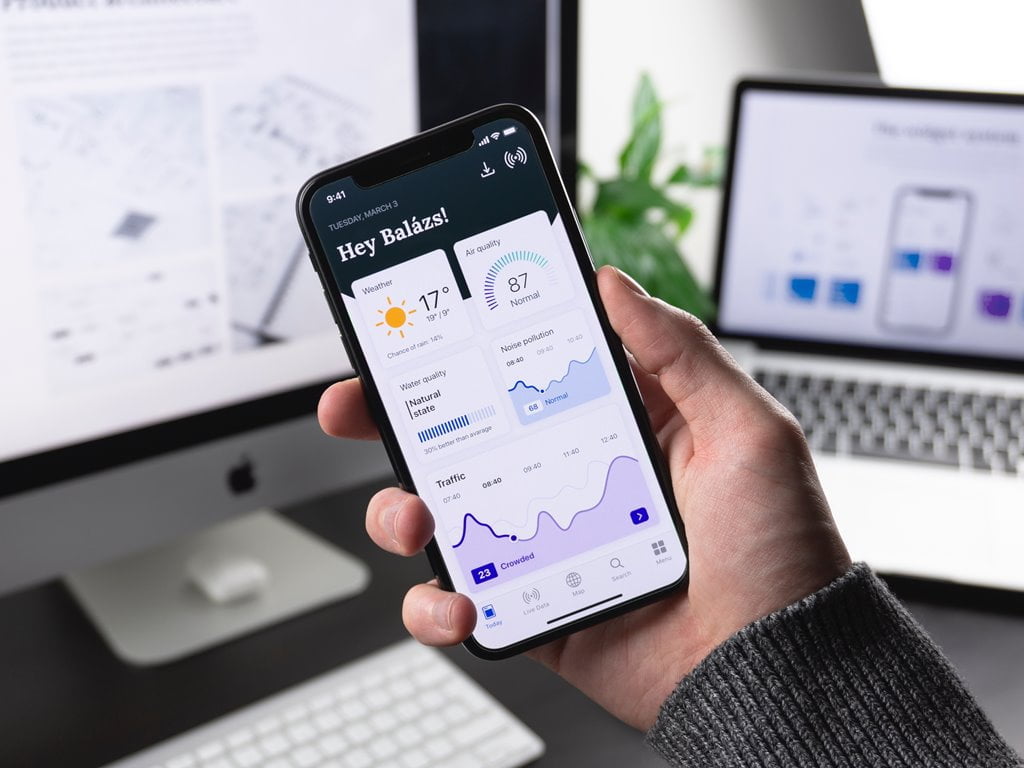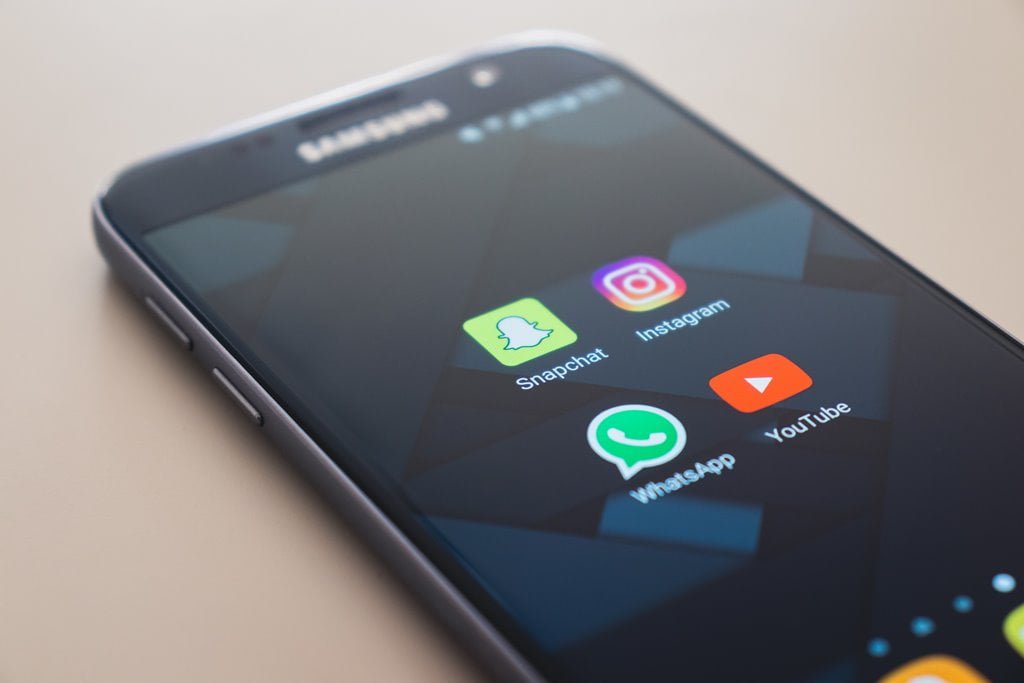In today’s world, apps are applicable to every industry, not only to tech-oriented industries, even if you don’t have a strong online presence.
Apps enable your consumers to make connections with you or purchase something from a business related to you, as well as provide extra features and functionalities for your business operations such as marketing tactics, retaining existing customers, and more.
Nowadays every person has a smartphone. Every time a person engages in the smartphone they are most probably using an app.
Developing a successful app is very difficult you don’t understand what you are doing. When understanding the Application Development Cycle, you will know;
- what to expect
- what to budget for
- how to create a successful app
for your business without making any errors.

The 5 Stages of the Application Development Cycle
App Development is a process. It has idea generation, prototyping, development, and development. But the process does not end even if you develop the app. It is an ongoing process that will end when you need to shut down your app.
However, the stages of app development – from the initial concept or iteration to a complete launch on supported app stores – may be roughly divided into five primary sections.
- Discovery, Market Research, and Planning
- Design and Wireframing
- Development
- Testing (Quality Assurance)
- Deployment
Discovery, Market Research, and Planning
This is the first stage of the app development cycle. It can be divided into three sub-stages as discovery, market research, and planning.
Discovery Process
The most natural of them is discovery; imagine coming across a need or problem that you need to fulfill with an app.
Essentially, you identify a problem that can be solved by developing or improving an app, and then you devise a strategy to carry out that notion.
You may also start the discovery process if you already have a few outstanding mobile app ideas for your business stashed away. Regardless, the creation of every app begins with a single fundamental idea or necessity.
However, a concept alone is insufficient to create a great app. Following that, you’ll need to conduct some market research – your app concept could be brilliant, but you’ll need to know if there’s a market for it or if such an app would benefit your business.
When developing an app you need to think about the security of the app from the startup. Because the foundation of the business is the startup safety.
When performing market research you need to find your target audience, the purpose of the app, languages used in the app, competitive research, overall budget and timeline, and marketing and promoting the app.
Planning Process
After doing market research and collecting the funds, you can begin planning.
You need to find your design and development team and discuss with them. Plan the features and the functions you can implement in the app limiting the budget.
By the end of the planning stage you will gain an idea about the app, how it performs and how to market it and how to develop the app.
Design and Wireframing
The design of the app depends on the services your app will provide. If it is a sales app, it should have payment methods and e-commerce functionality.
Wireframing is used to build a clear visual image of the features and functionalities of the app. That is building the sketch of the user interface of the app.
When wireframing,
- Prioritize the user experience over all other concerns.
- Place your brand anywhere it is suitable.
- Remember that you’re creating a mobile app rather than a website, which needs different solutions or methods.
The backend of the App
You’ll need to work out the backend of your app as you wireframe. This is everything that you and your team will interact with on a daily basis in order to operate the app and solve client complaints.
Choose the backend architecture that will support your app in terms of servers, data integration, push notification services, and other features.
Wireframing is important throughout this stage of the app development process because you can change the frame if you run into obstacles or budget issues.
After completing the wireframe prototype the app. Once the basic functions are prototyped let a few people test them instead of your development team. Get their feedback and make the necessary changes and start development of your app.
Development
Once the prototype is complete make a list of changes or developments you should do in the fundamental design of the app.
In this development stage,
- Configure storage solutions and databases.
- Set up servers for your app’s backend.
- Create developer accounts for app marketplaces to facilitate distribution.
- Depending on your skill set, you can program and create the app yourself or hire developers.
- Create your app’s “skins” or screens, which should resemble the storyboard designs from your wireframing work.
Testing (Quality Assurance)
This is a very important stage in the app development process. Even though your app looks amazing, and development is complete, you cannot be certain that the app will work error-free.
Do a lot of testing by yourself. Go through wireframes, early concepts, and features you included in the app. If something was added, try it out and observe how it compares to your initial expectations about the function.
Moreover, you should certainly hire outside users to test the app or have employees in your business test the app as part of their job obligations. Inquire about everything, such as how the UI feels or if the app responds quickly to user inputs.
You should also test how graphics perform over time and how they affect current mobile device hardware. If multiple pictures have enough cross-platform compatibility (if applicable). Can you push out updates or major bug fixes in a timely way if and when they are identified if the update/bug fixing mechanism is responsive.
Furthermore, after testing is over, you may proceed to the last and most pleasurable stage of the app development process.
Deployment
Deployment is the fifth and final stage of the application development cycle. However, if you want to ensure success, you must plan ahead of time.
If you intend your app to be downloaded after it is instantly launched, then you should have been ready with a good marketing campaign and advertising plans.
Marketing
Marketing should do keyword research in order to optimize both the app’s name and its accompanying SEO text, such as app descriptions, ads, and so on.
App store optimization, or ASO, is a different but connected focus to SEO since it makes sure your app does not get buried behind other apps that are likely to be launched in the same month.
Remember to support and advertise your app on your website, if you have one. If not, it may be smart to create a webpage for that app so that people can find it and be directed to a download page. Include information about the launch of your app in your social media and email marketing as well.
When you’ve completed all of this and marketing is in full swing, you can finally launch your app when it’s good and ready. If done correctly, your app should receive hundreds of downloads from interested users and customers right away.
Official Launch
Make sure to publicize the formal launch of your app everywhere you can, and consider hiring social media influencers and YouTubers to promote your app.
Building momentum is essential for a successful launch. It’s also critical to pay attention to early feedback from your app’s first users. If they uncover a defect in the app, you may have enough time to mobilize your bug-fixing staff and resolve the issue before the bulk of your users do.
In any case, make sure you have a very easy option for any feedback and that you reply to your customers’ initial remarks.

Updates
Even after your app is launched, you’ll need to have some people on hand to answer consumer complaints and carry out periodic repairs and upgrades.
Updates are major modifications to your app’s code or programming that should be made after gathering a considerable amount of similar user feedback.
After gathering that feedback, you can simply restart the app development cycle by coming up with a solution to issues people are having with your app, wireframing that solution, testing it with a prototype version of the live app, then building in the fix and deploying it to live users.







0 Comments